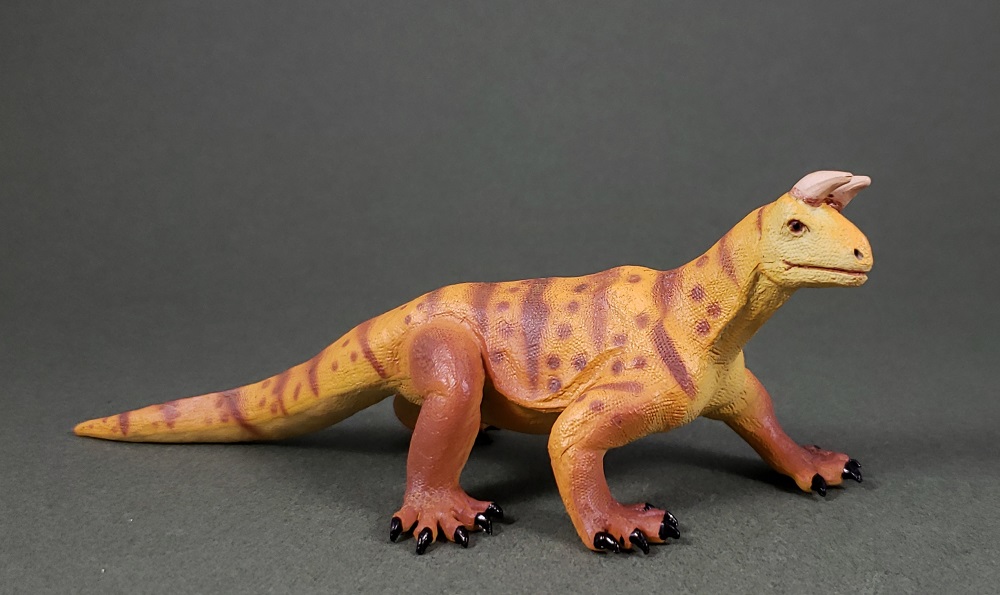
The Jurassic and Cretaceous periods featured tetrapod lineages exploring minor evolutionary variations on a handful of themes. But during the Triassic period, tetrapods evolved into all kinds of strange forms, some of which looked like slightly wrong versions of later animals. One of these is Shringasaurus, which has some features of a sauropod, a ceratopsian, and an iguana, without being particularly closely related to any of them. Shringasaurus was first announced in the summer of 2017, and Safari is the first major manufacturer to try their hand at a figure. They’ve done a pretty solid job of it.
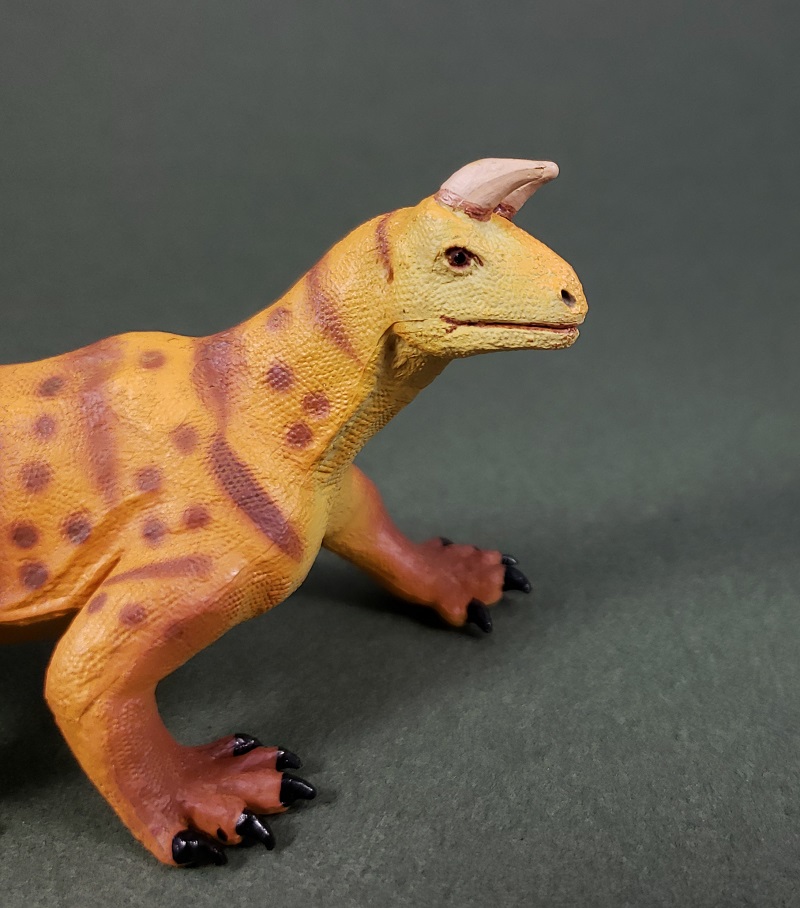
Shringasaurus was an archosauromorph but not a true archosaur, which means it’s equally closely related to both crocodiles and dinosaurs. It lived in what is now India during the Middle Triassic, shortly before the first true dinosaurs appeared elsewhere in the world. Shringasaurus is notable for its long neck, heavy forequarters, and two horns projecting forward from the skull above the eyes. The horns appear to only be present in one sex, which the scientists who described it presume to be the male.

The figure from Safari shows the large herbivore (3-4 meters) mid-stride, with its knees and elbows held out at an angle from the body. This is in contrast to dinosaurs and mammals, which typically have their elbows facing straight back and knees straight forward (parasagittal gait). The limbs have five clawed toes apiece, which is likely based on both its phylogenetic position and its other body proportions, even though complete feet are not preserved for Shringasaurus in particular. Measured along the spine, the figure is almost 18 cm long, making it about 1:20 scale. At this scale, it will fit in alongside some of Safari’s other before-the-dinosaurs figures, like Prestosuchus and Dimetrodon.
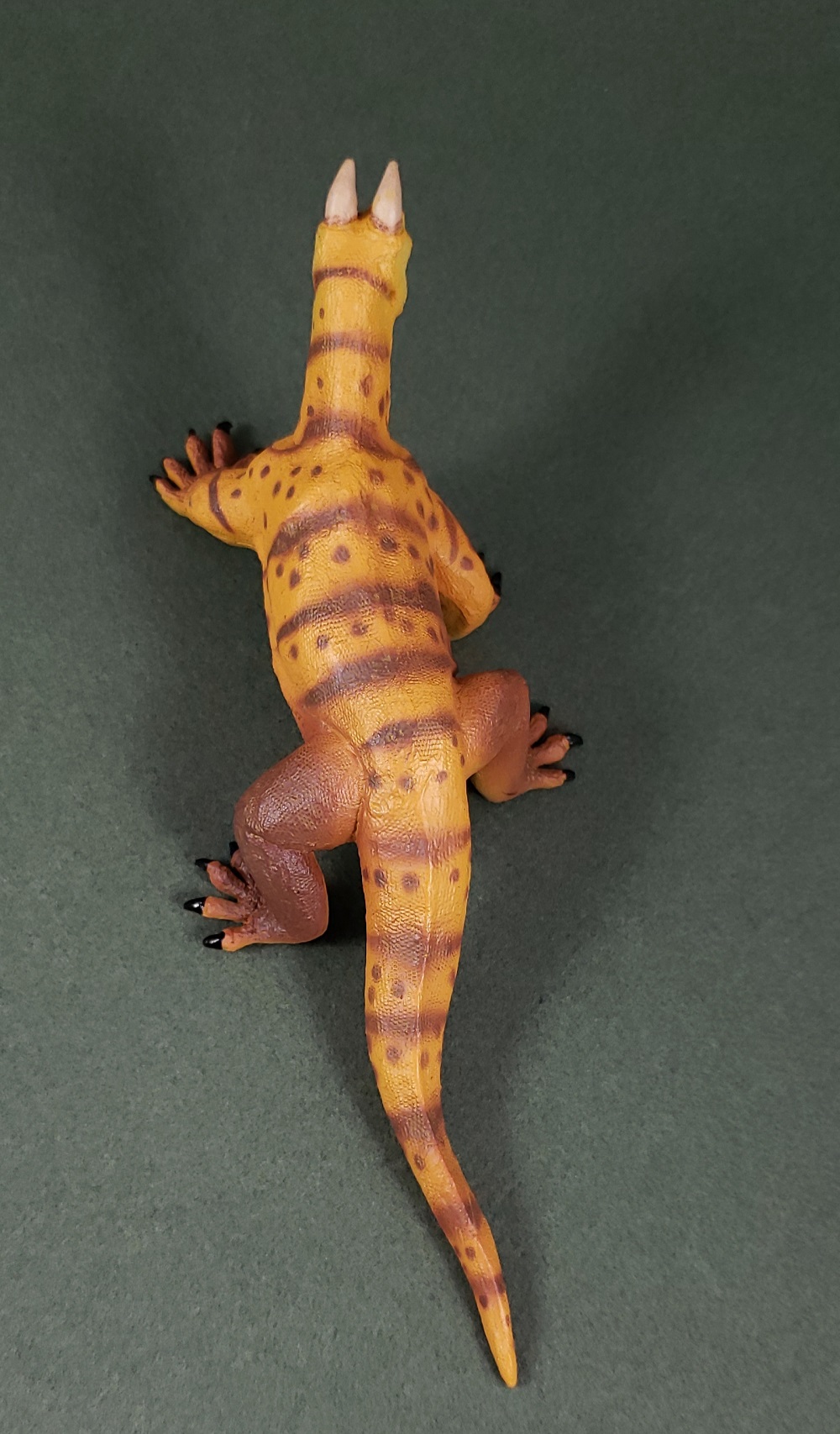
The skeletal reconstruction included in the original description of Shringasaurus has come in for some criticism, particularly as far as relative proportions are concerned. However, the authors are careful to note that the reconstruction is based on a composite. It isn’t known that all the bones that went into it are from the same individual, since bones were mostly found disarticulated. The description’s supplementary data includes selected measurements, but not the full range of sizes for each element. The data table is explicit that bones may come from multiple individuals. The humerus (upper arm) and femur (thigh) they report are roughly the same length, around 270 mm. And on the figure, they’re also about equal in length, around 12 mm. The scapula (shoulder blade) the authors report, however, is huge, about 380 mm. On the toy, the scapula is scarcely longer than the humerus, with the caveat that it’s pretty hard to measure a scapula on a toy where the shoulder joint is buried under skin and muscle. If the scapula the authors report belongs with the humerus they report, then Shringasaurus is more front-heavy than the authors’ own diagram shows, and more so than this toy shows as well. An artist made a much-circulated alternative diagram based on the reported bone dimensions, which, if correct, makes the animal look quite imposing. But again, it’s impossible to know which limb bones belong to which individuals, so we have only a vague idea of the relative proportions given what has been published (if anyone knows of published data on the range of variation in the limb bones, or of relative proportions of the one partially-articulated individual, I’d love to know about it).
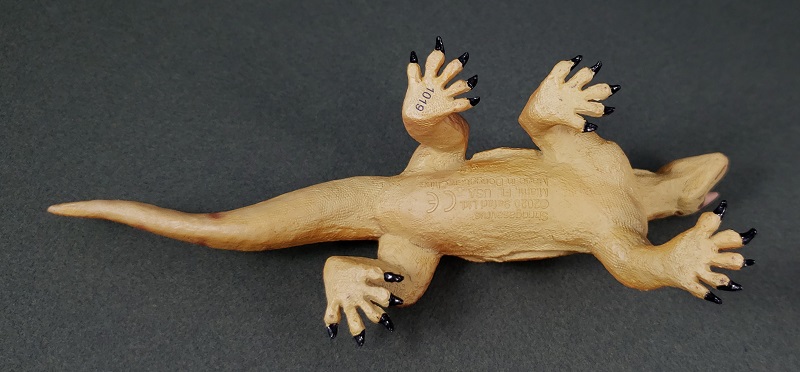
With the most contentious aspect of this figure out of the way, let’s move on. The neck is appropriately long, the head shape is spot-on, and the tail is a reasonable length. The scaly hide is rendered in a dull medium-orange, with burnt umber spots and stripes. I could see this pattern being decent camouflage among a riverside underbrush of horsetails, ferns, or bennetitaleans. The belly is paler, the horns are tan, darker at the base, and the claws are black. The mouth, nostrils, and ear openings are all discernible in the sculpt, and all but the ear openings indicated with paint as well. A subtle flap, similar to what you’d find in some lizards, indicates where the cloaca would be. This is a generally well-researched, well-sculpted figure.
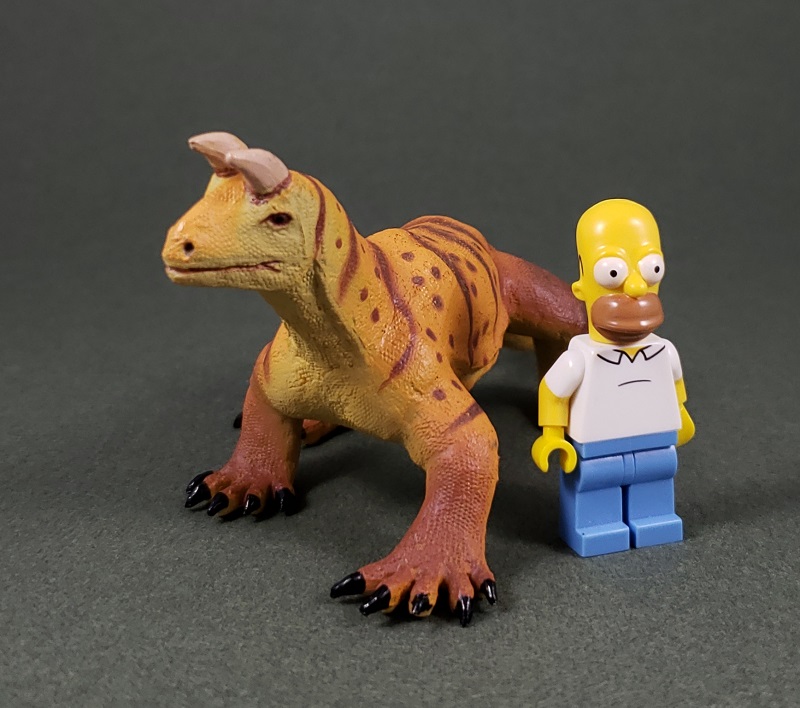
Safari Ltd only occasionally produces figures of newly discovered animals, and despite the unparalleled weirdness of the Triassic, they offer few figures of animals from that period. For both of these reasons, this is my favorite among their 2020 releases. I can’t recommend it highly enough. Anybody who doesn’t buy this immediately has terrible taste (I’m being facetious, but only a little). Available at good retailers all over.
Disclaimer: links to Ebay and Amazon on the DinoToyBlog are affiliate links, so we make a small commission if you use them. Thanks for supporting us!




A nice figure. I think the feet look too big and I don’t at all like the paint job, I wish Safari would discover that there are other colours in the wold beside brown and yellow.
My favorite release of 2020!
One of the few prehistoric reptiles in my collection 🙂
I don’t like that the line for the mouth splits in two at the edges.
Reminds me of those old Sci fi films where they stuck some fake horns on an Iguana and called it a dinosaur.Nice to know those creatures weren’t completely unrealistic.
Nice review. The sculpt is truly lovely. But there is something about the paint application (as with so many excellent sculpts these days) that detracts from my innate willingness to suspend disbelief that this is simply a model and not a miniature version of the creature itself.
Maybe that is a difficult to avoid consequence of the combination of a first-class sculpt (by a top paleo-artist) with the need to keep the cost down so as to enable a decent profit margin.
Possibly.
The other alternative is to find another (possibly new?) method of paint application that is quick and cost effective.
Sadly, I am unable to be more specific.
Magnificent description of the shringasaurus of Safari. He is a great figure as Halichoeres comments and sincerely I also recommend it. He is a nice, good and cheap figure.